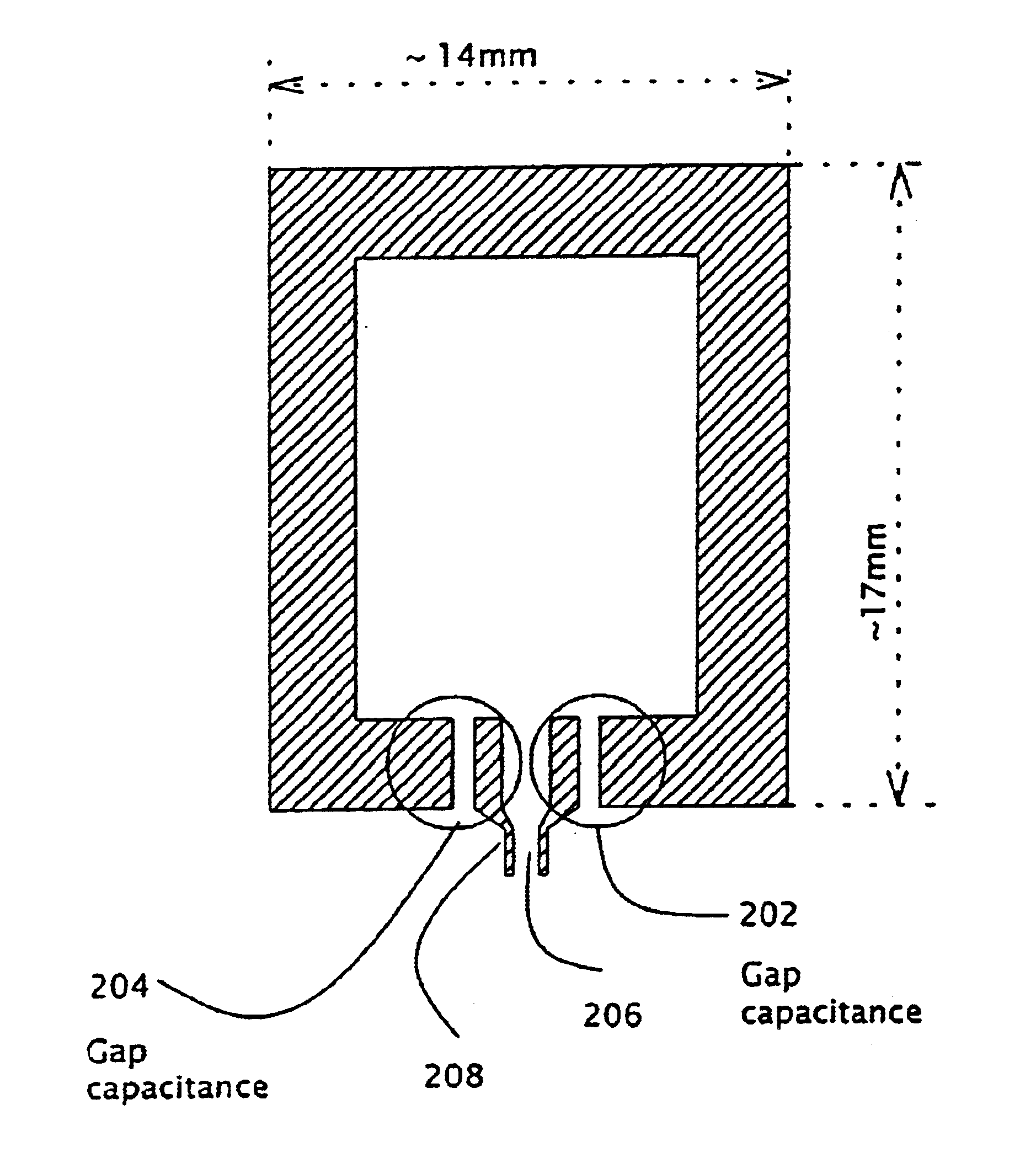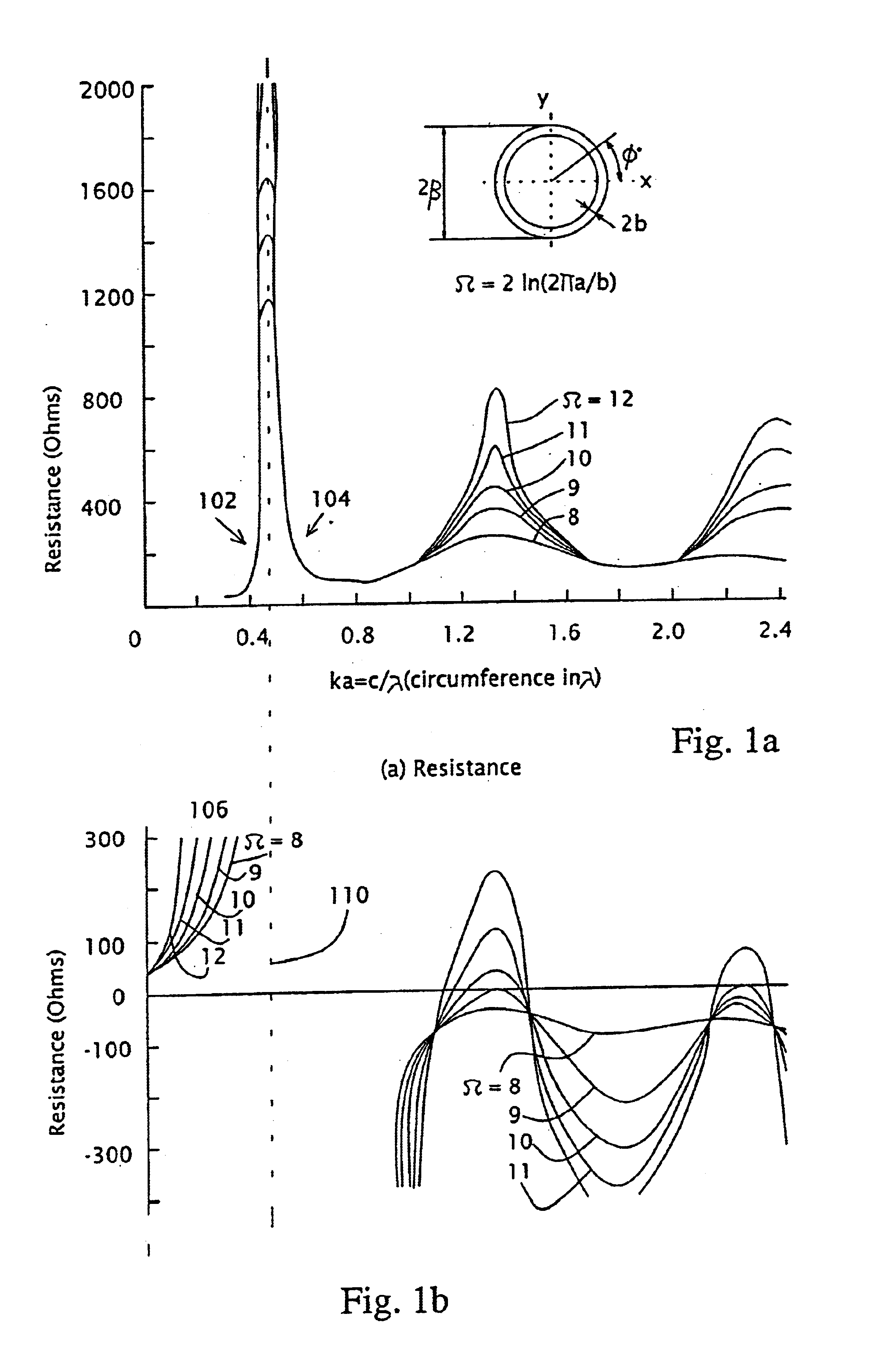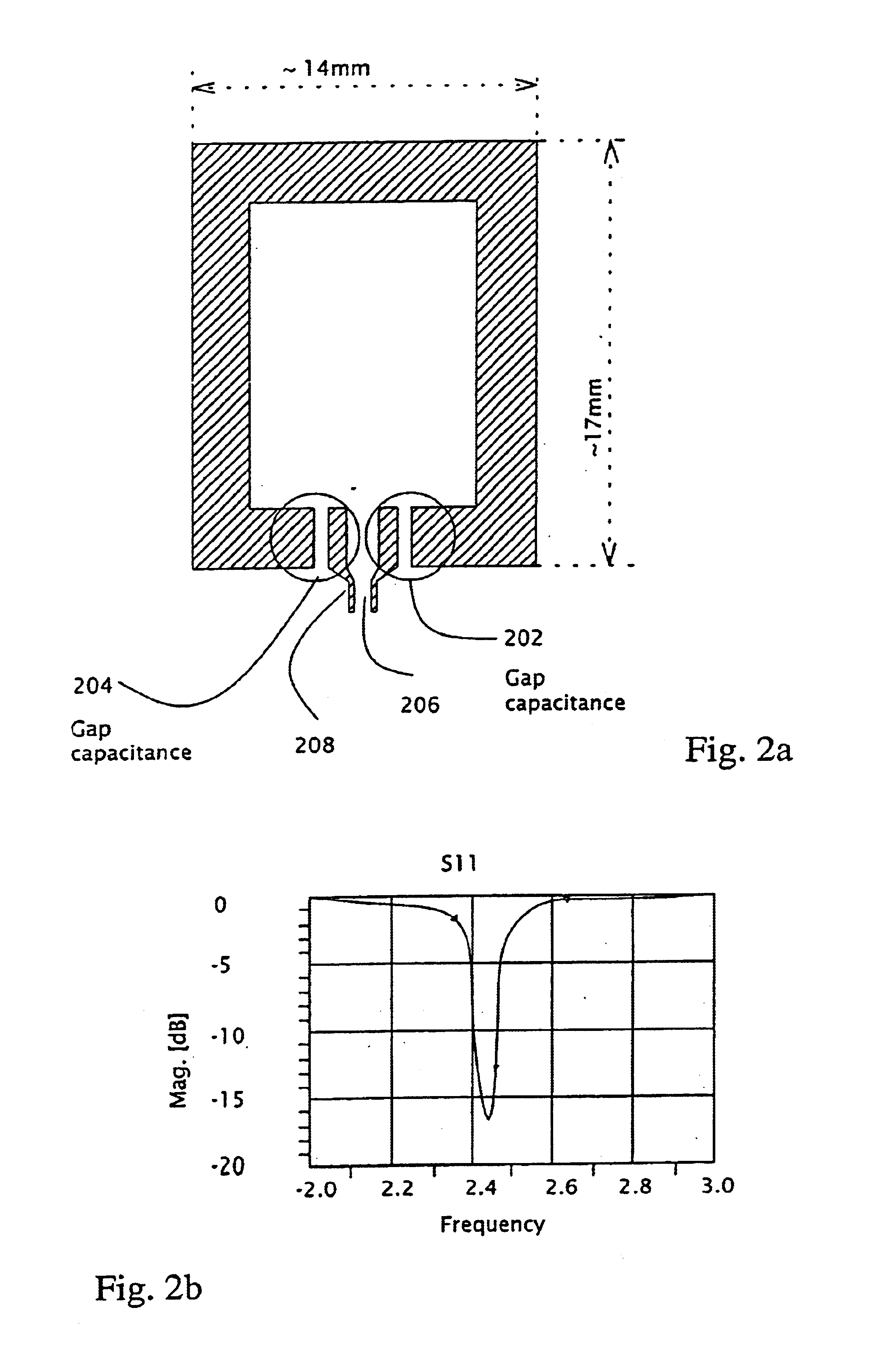Method for designing a small antenna matched to an input impedance, and small antennas designed according to the method
a technology of input impedance and antenna design, applied in the field of small printed antennas, can solve the problems of lowering the cost of antennas and antenna integration in the system, limiting the size and form factor, and putting a major limit on the effect of size and form factor, and achieves the effects of small area, easy and inexpensive manufacturing, and high performan
- Summary
- Abstract
- Description
- Claims
- Application Information
AI Technical Summary
Benefits of technology
Problems solved by technology
Method used
Image
Examples
Embodiment Construction
[0021]The present invention is of a high performance, narrow bandwidth, impedance matched small antenna for short-range wireless applications. Specifically the antenna of the present applications is matched to the desired input impedance by choosing a special singular point. The matching is obtained by using a very small capacitance that is provided by an element which is serially connected to the antenna feeding port aid is an integral part of the antenna, such an element being preferably a printed gap.
[0022]As mentioned above, it is possible to overcome the present difficulties faced by antenna industry or RF module designers, by a unique and elegant technique, which is the essence of this invention. Generally, the design procedure starts by choosing to match the antenna in a singular region of its input impedance. A singular region is an interval in which the input impedance, both its real and its imaginary parts, have high derivatives with respect to the geometrical dimensions o...
PUM
 Login to View More
Login to View More Abstract
Description
Claims
Application Information
 Login to View More
Login to View More - R&D
- Intellectual Property
- Life Sciences
- Materials
- Tech Scout
- Unparalleled Data Quality
- Higher Quality Content
- 60% Fewer Hallucinations
Browse by: Latest US Patents, China's latest patents, Technical Efficacy Thesaurus, Application Domain, Technology Topic, Popular Technical Reports.
© 2025 PatSnap. All rights reserved.Legal|Privacy policy|Modern Slavery Act Transparency Statement|Sitemap|About US| Contact US: help@patsnap.com



